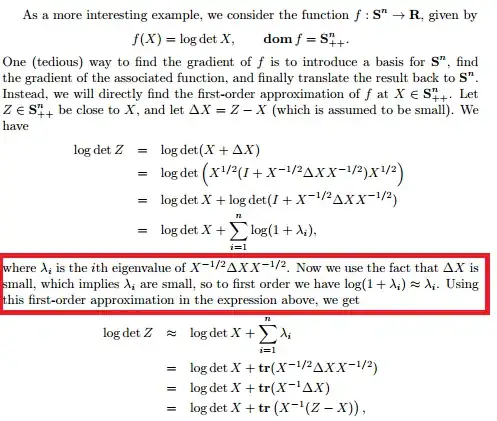In Boyd's CVX book, there is a step by step analysis of the gradient of so called log det function
Three confusions:
Is the determinant for positive definite matrix exactly equivalent to the sum of eigen values is equal to the trace?
There is the claim that because $\Delta x$ is small (what does it mean by small), therefore $\lambda_i$ are small, is there any justification to this claim? Because after all we are computing the eigenvalues of $X^{-1/2}\Delta X X^{-1/2}$ not simply $\Delta X$
By first order approximation of $\log(1+\lambda_i) \approx \lambda_i$ I am assuming first order Mac series?
Thanks!
